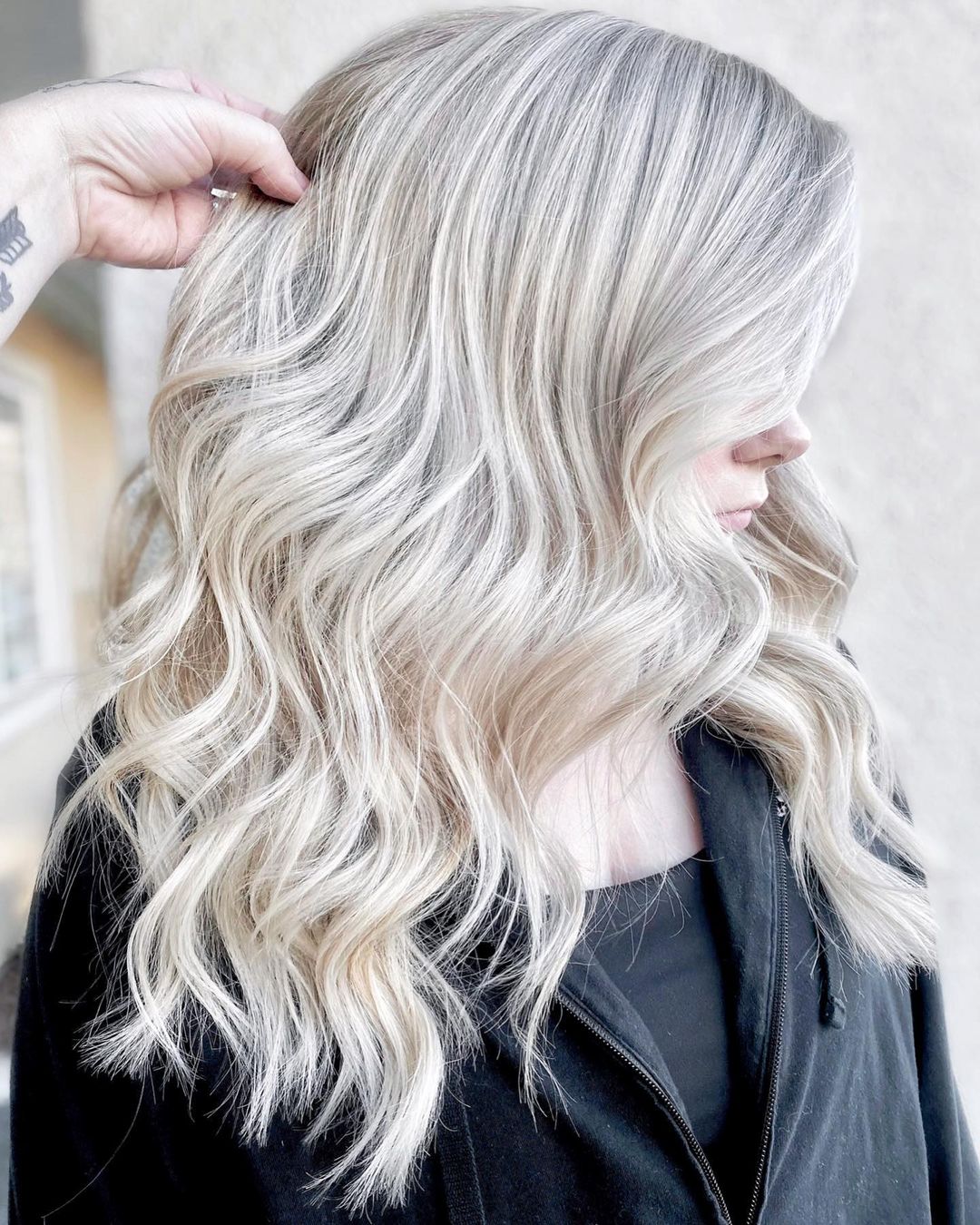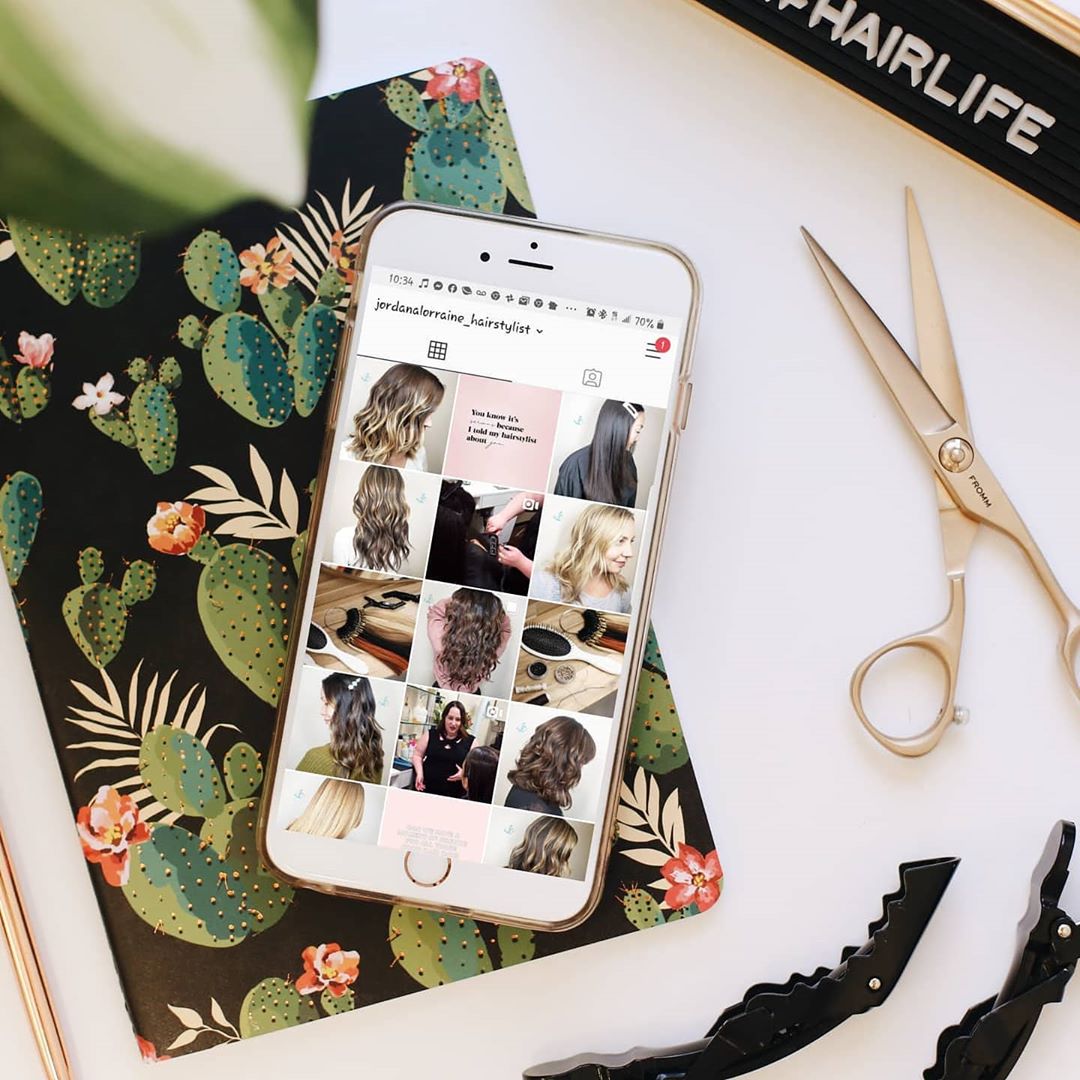25 Haircut Terms for Better Communication with Your Stylist
Getting a haircut can be exciting and scary at the same time, especially when you are trying out a new stylist. Communication is one the most important part of our craft as hairstylists; without it, we will never be able to know what you want. It’s almost as if we speak a different language than you do, called hair talk. Here are 25 of the most important haircut terms to help you better communicate with your stylist!
The Haircut Terminology You Need to Know
A long time ago, when I wasn’t a hairstylist, my mom and I went to see the same hairdresser to get our haircut. After having our consultation together, it turned out that, in the end, I got the haircut my mom wanted, and she got what I wanted. So, you can imagine how we looked. Luckily, we are super easygoing and just let it grow out. But, that’s not the case for everyone. These words and phrases will help you better understand hair-cutting terminology, so you can better explain to your stylist what you want and actually understand what she is saying to you!

- Don’t Talk Inches: Everyone’s “inch” looks different. Instead, show your stylist where you want to see your overall length, using your body as reference points, e.g., collar bone, above the breast or chin length are great points of reference.
- Face-Framing Layers: This can go very wrong, if you don’t let your stylist know how short she can go for your shortest layer and what length would keep you comfortable. For example, if you have long hair and want face-framing layers, you need to decide how short the shortest layer can be; maybe it brushes the collar bone.
- Bangs/Fringe: Also, bring a reference of where you want to see the length and style of your bangs. For example, a curtain fringe is a much longer, softer look that frames the face much like a curtain frames a window, rather than a solid blunt bang that sits heavy on the forehead and is usually cut above the brows to draw attention to the face and eyes.
- Wispy Ends: This term refers to how the ends of your hair look. This can be achieved with a razor or scissors. The result is soft ends, with less density, that blend into each other, ideal for those with higher density hair and a straighter texture. When done well, wispy ends can provide movement and texture to hair that otherwise lacks it.
- Blunt Edges: This term refers to how the ends of the hair look. This is achieved with scissors and leaves the most amount of density on the ends, thus providing the least amount of movement and texture. Recommended for those with super fine hair and curly hair.
- A-Line: This term refers to how the perimeter, or length, of hair is cut. This is shorter in the back and longer in the front. It’s up to you to decide how severe the A-line is, so go to your stylist prepared to answer some questions about length.
- Asymmetric: This is a haircut term that can be easily confused. This refers to a haircut that is two different lengths. It can be designed disconnected or connected to the other side of your haircut. Typically, when talking about asymmetry, we are talking about the length you see in the front of your hair. For example, the left side can be cut to your chin and the right side can be longer down to your shoulder.
- Undercut: This is used to remove bulk in the bottom half of your hair near the nape and can be used in any haircut, if designed well. It can also vary in length from long to shaved, depending on the look you want.
- Micro Fringe: This is a term used for super short bangs that are incorporated into the rest of your hair. Typically, the length is about two inches long.
- Shattered Ends: This is another term used to describe how you want your ends to look. Typically, they’re cut using a point-cutting technique to create irregularities in the length of hair. If you think about how a piece of glass shatters when it’s hit; it breaks in different directions. This gives you movement while maintaining a healthy density on the ends.
- One Length: This is pretty self-explanatory. There are no layers in this cut. This look is heavy and flat, great for those with low density.
- Square Bob: This is more of a technique and haircut, rather than a term. I’m always getting clients asking for blunt bobs, which is technically a square bob. It’s a strong and well-balanced shape, but it provides little volume or movement if you soften the ends a bit with a little point cutting.
- Shaggy Layers: Just FYI, this is a very layered haircut, and, when done wrong, it will look like a mullet. But, if it’s done right, this is a super rad haircut. This can result in short layers on the crown and gradually gets longer, as you work your way to the ends.
- Graduation: This is another technique common in haircutting. Although there are only three types of graduation, the most common is the triangle. It’s short in the back, longer in the front and can be designed in various lengths. For example, Victoria Beckham’s brunette graduated bob from the mid-2000s was a popular haircut.
- De-Bulking: This is something we do with those who have a mammoth amount of hair. It can be done with texturizing shears, undercuts or layering. But, before you go and ask your stylist to de-bulk your hair, you need to be very clear as to where your hair feels the heaviest and how you much bulk you want to remove. This is a method that should be done with extreme care. The point of doing this is to help balance the density throughout the hair, rather than “thinning it out”; no one wants thin hair.
- Razor Cut: You can have an entire haircut done with a razor. This will result in a super soft and feathered look.
- Lived-In: I included this look because, in the last few years, when that “lived-in texture”, coined by Anh Co Tran from Ramirez tran, hit salons across North America, it has taken off. This results in a super, soft livable worn-in, beachy texture. However, not everyone knows how to execute this, so if you are interested in this look, you need to find someone who has experience, because when it comes to haircuts, execution is KEY!
- Movement: Although not a technique used by hairstylists, it’s something we want to achieve in haircuts, especially that long, flowy hair. If it doesn’t move, it lacks volume, and most people want volume and movement. This can be achieved with layering, texturing the ends and using the correct shampoos and conditioners to help prevent buildup.
- Density: This, also, is not a technique but good to understand. Density refers to how much hair you have on your head. This is so important to know as hairstylists because, if we don’t analyze your hair density, we won’t be able to give you a great haircut. So, those with low-density hair should have almost no layers and medium density can work with texture. For those with high-density hair, you can layer your locks by de-bulking and texturing. So, basically, the more hair you have, the more we can work with.
- Texture: You need to know your own texture and learn how to work with it. This is also important when you are visiting a new stylist or changing up your hair look. If you are someone with coarse, frizzy and curly hair, and you rarely wear your hair straight, it’s best to go in with your hair naturally styled, so your stylist has an idea of what they are working with. Also, bringing in some inspiration pictures of others with similar texture, but not really styled too much, will also make your haircutting results more successful. The same goes for those who don’t have any experience doing their hair and want a wash-and-wear style; make sure your stylist is aware that you want an easy style.
- Short Pixie Hair: Pixie is a style that is short; it is cut above the ears, and, in so many variations, depending on the shape you want. It can be done round, disconnected, long fringe short sides, can be textured or flat. Really, the possibilities are endless, if your hair allows it.
- Medium Pixie Hair: This, unlike its short friend, has a bit more length and density to it. Not so bold and funky; a bit more soft and subtle with a hint of edge.
- Long Pixie: This haircut term lays somewhere between a medium pixie and a bob and, like the other pixies, its possibilities are also endless, depending on your hair and your hairstylist’s abilities to think outside the box.
- Creative Haircut: I like this one. It leaves your hairstyle in the hands of the artist. Only go down this route if you absolutely 100% trust and believe in your stylist and you’re ready for a change.
- Precision vs. Texture: A precision haircut is like a well-crafted piece of architecture – every hair has a place and is done at precise angles and lengths to achieve a defined shape. A textured haircut is much like sculpting – you don’t always have a definitive guide, but visually, it looks balanced and intentional. It’s created using texturing methods with free-hand layering and is visually designed.
I believe these haircut terms are the most important. My recommendation to you is that, if you want a haircut that works with the hair you have, find someone who specializes solely on cutting and styling hair. Chances are that she/he spends time educating themselves and will have more experience with using different techniques to achieve their customers’ dream hairstyles. For more inspirations on various haircuts and styles, follow me @sonia_hairstory and my salon @evolvehairstudiotoronto.























